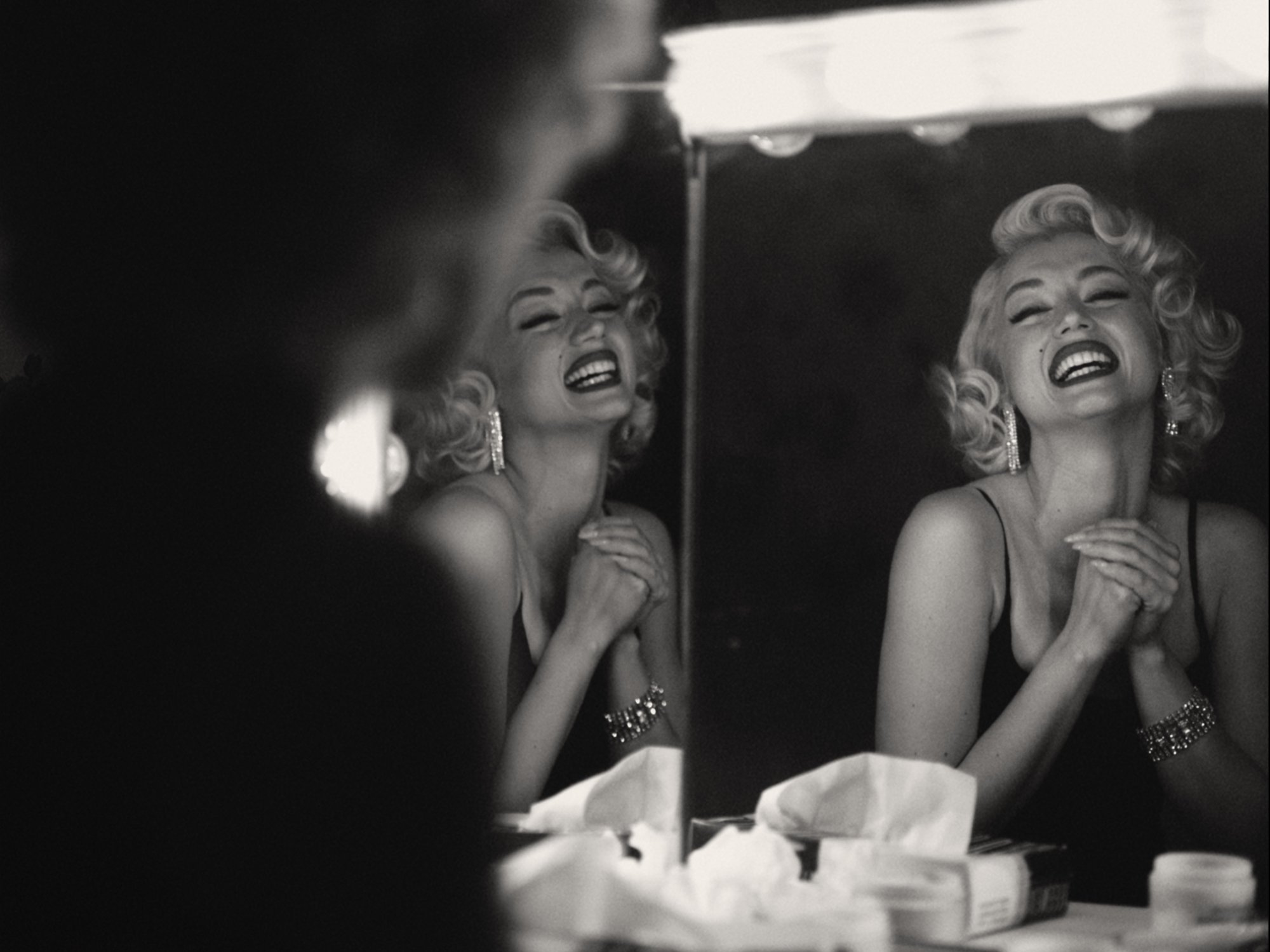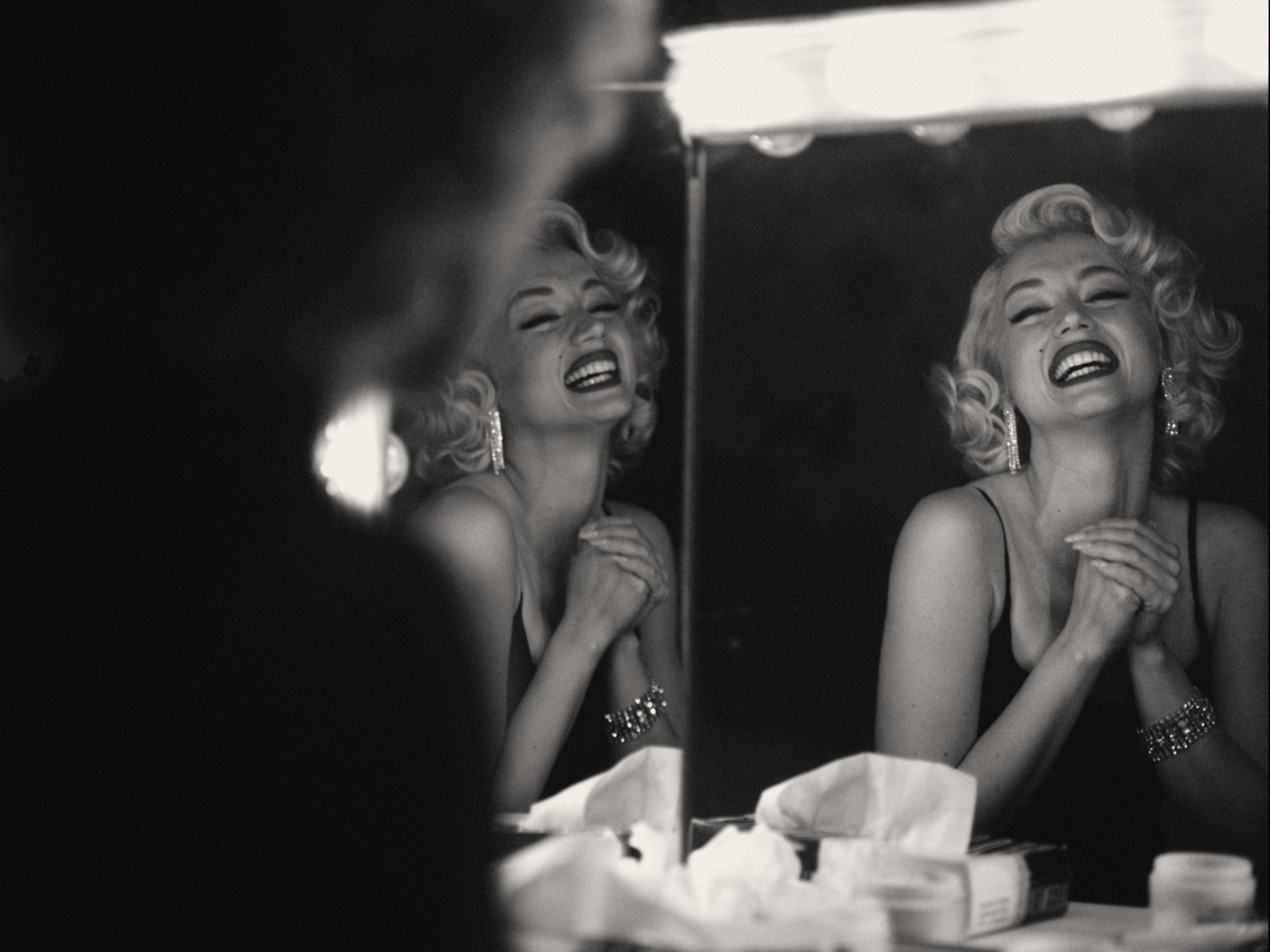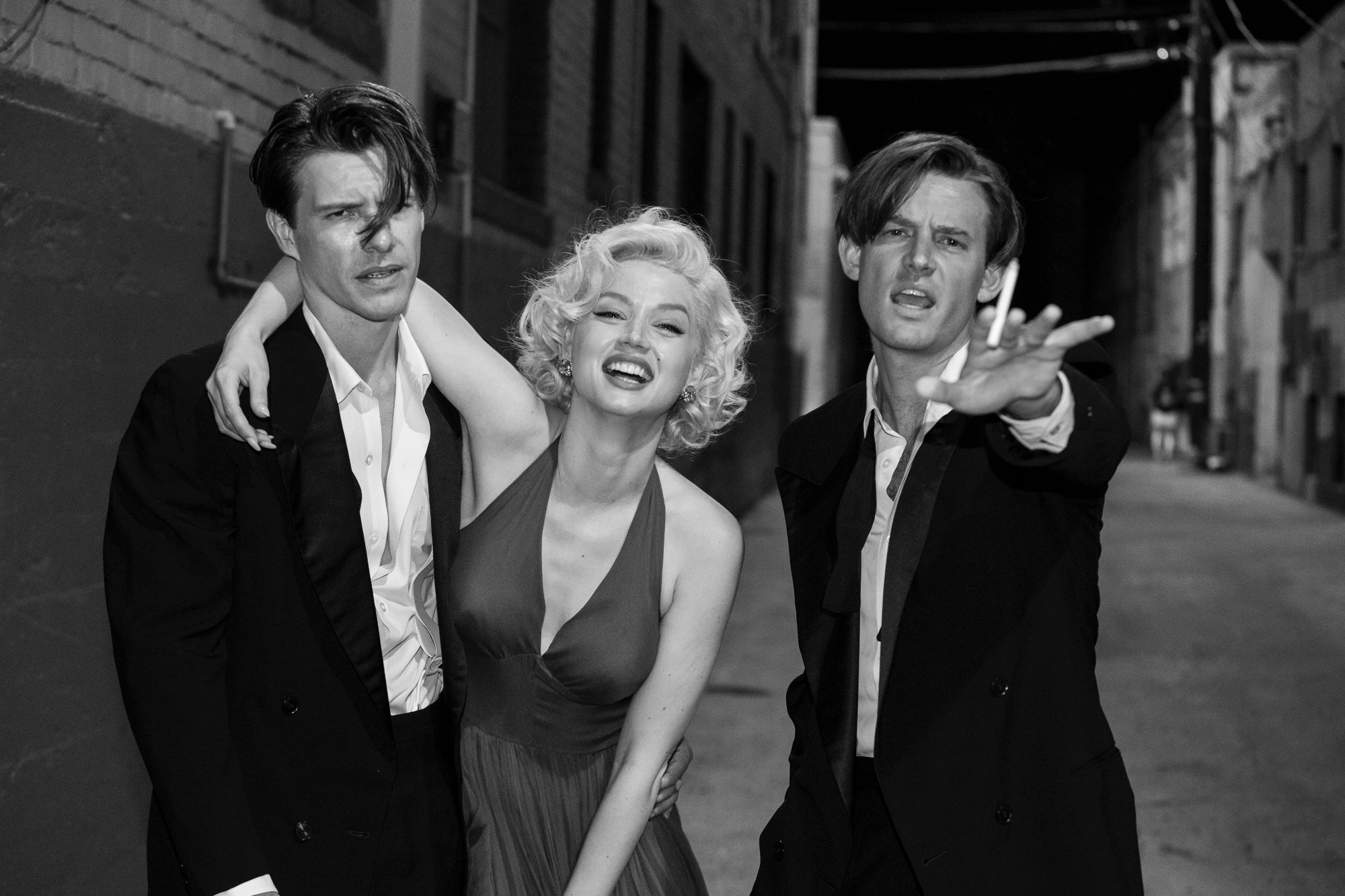
‘Blonde’ Movie Review: Ana de Armas Exceeds All Expectations in Celebrity Exploitation Film
Blonde is the type of biographical drama that takes nerve to make. Writer/director Andrew Dominik does the opposite of sugar-coating the story of Norma Jeane/Marilyn Monroe and his message on the world’s celebrity-obsessed culture. Blonde commits the very act that it’s meant to criticize, further subjecting the Hollywood star’s legacy to trauma porn that doesn’t challenge audiences the way it should.

‘Blonde’ tells a fictionalized version of Marilyn Monroe’s life

Beginning in 1933 Los Angeles, Jeane (Lily Fisher/Ana de Armas) is a young girl living with her mother (Julianne Nicholson). However, the absence of Jeane’s father haunts her, as her mother abuses her for reasons that she can’t understand. The young girl ultimately finds herself set on a difficult path to stardom as she faces the horrors of corrupt Hollywood executives.
Blonde is a fictionalized version of the woman who became Monroe, as the film tries to tap into the mind of the person behind the iconic name. The story chronicles her personal journey through fame, family, love, and the pursuit of happiness.
Writer/director Andrew Dominik crafts a feature about duality
Blonde begins with a 7-year-old Jeane, who yearns for nothing more than a loving family. She looks up to her mother, despite the abuse that she subjects the young girl to. Meanwhile, Jeane never met her father. Her mother finally shows her a photograph that she holds so preciously that she refuses to allow her daughter to touch it. Jeane can only look at him from afar, which is very much the same dynamic that she comes to know with her mother over the years. Nevertheless, Jeane never gives up hope that one day her mother will be well enough to leave the psychiatric facility and her father will enter her life.
There’s a running motif of duality that threads through the film. Dominik keeps Jeane front-and-center, but he introduces Monroe as a character all her own. Jeane’s growing resentment toward the famous side of her life only causes her to desperately grasp onto the real side of herself even tighter. Fans, critics, and many of her companions experience a love-hate relationship with Monroe as she screams out for her true self to be both heard and understood.
Most of the men in Jeane’s life don’t take an interest in the person underneath the makeup – they only see Monroe. She’s a commodity to them, as they abuse their power to take advantage of her in more ways than one. Powerful Hollywood figures compare her to a “mental patient” in an audition and demean her body for kicks. As a result, Jeane further loses herself in the character of Monroe.
‘Blonde’ is a grand spectacle that over-indulges in Marilyn Monroe’s trauma

There’s no question that de Armas is the shining star of Blonde. She fully commits to the part, disappearing into the role with a powerful portrayal of Dominik’s duality between Jeane and Monroe. De Armas never falls into caricature territory, bringing Jeane and Monroe to life with such fervor. Meanwhile, Adrien Brody also turns in capable work as Arthur Miller, as he elevates the role beyond its small screen time.
Blonde takes big swings visually, and many of them pay off. Dominik and cinematographer Chayse Irvin continue the theme of duality through changing aspect ratios and the switch between color and black-and-white. Scene transitions aid in depicting a fog in Jeane’s life that only thickens over the course of the story. Strange CGI babes in the womb aside, Dominik has an impressive visual piece of storytelling that is both nuanced and captivating.
However, Nick Cave and Warren Ellis’ haunting music serves as the best film score of the year. It’s deeply chilling, capturing a dreamlike quality that often transforms into an eerie nightmare. Cave and Ellis masterfully capture the film’s surrealist elements while further putting audiences under the picture’s spell.
Dominik’s return to feature filmmaking echoes the sentiment of 2021’s Spencer, which gave a fictional account of another popular icon – Princess Diana. However, the core difference is that it still respected its subject. Blonde‘s message is about celebrity-obsessed culture and the destruction it caused Jeane, but it commits the very transgression that it accuses the audience of. Dominik occasionally hints at other hardships, such as salary disparity, but they’re quickly dropped.
Blonde is exploitative, gratuitous, and it doesn’t have a whole lot to say. Dominik relishes in Jeane’s pain a bit too much, crossing into trauma porn territory. It’s rightfully unsettling and disturbing, but it paints only one idea of Jeane and Monroe – a victim. Even her highs are coated in harsh, cold abuse that minimizes the real woman who already endured so much. For all of its visual wonder and an exquisite performance from de Armas, Blonde is stifled by its need to shock rather than create a fully-realized Monroe.
Blonde hits select theaters on Sept. 16 and streams on Netflix starting on Sept. 28.
How to get help: In the U.S., call the National Domestic Violence Hotline at 1-800-799-7233 or text START to 88788.


